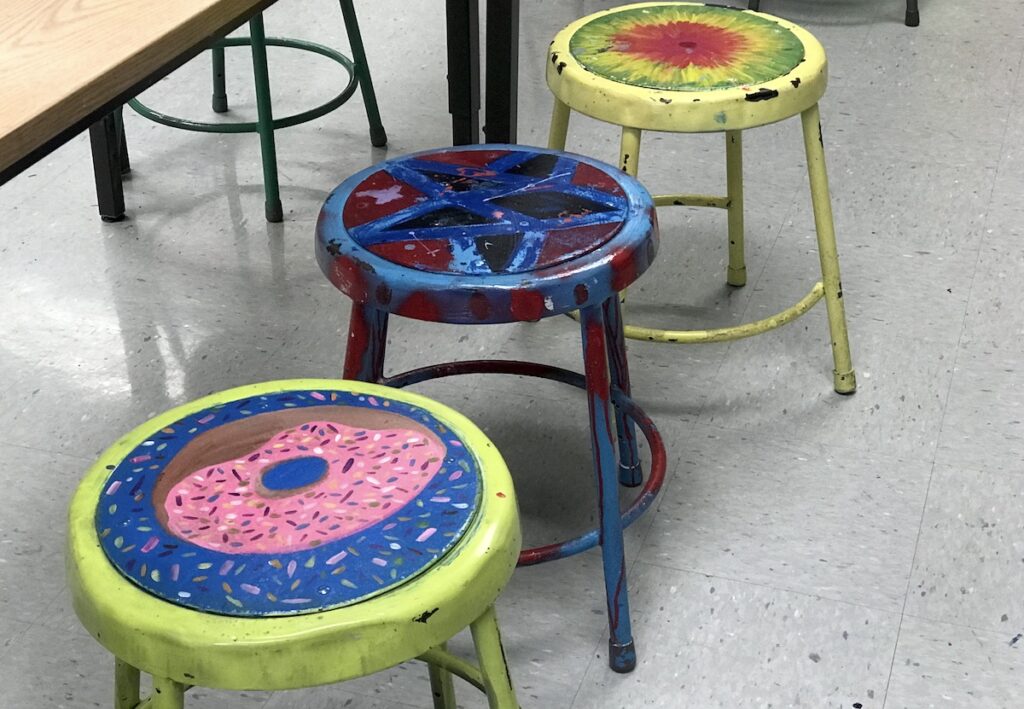Stepping into a new role as a middle school teacher is a unique experience. If you’ve ever told someone you teach middle school, their response is probably similar to, “You are a saint,” or, “It takes a special kind of person to do that.” It most certainly does! Part of the reason might even be the fact that you never left your young adolescent self behind (or maybe that’s just me).
But just because you are meant to teach middle school does not mean there aren’t challenges.
Here are 5 classroom management truths that will make your job a lot easier.

1. It Takes Time
If you are a teacher entering into a new role, it is going to take time for your students to trust you. There will be an adjustment period, especially for those students who may have had a strong relationship with your predecessor. Your students will be used to the routines put in place before you, so you have to give them time to adjust to your teaching style. This adjustment period will probably take longer than you expect, so don’t feel defeated if it does. Try not to take it personally. I guarantee you it will be harder before it gets easier, but it will get better.
2. It’s Okay Not to Make Art
A strong relationship is a vital ingredient to a successful middle school art room. Sure, your art curriculum is important, but if you don’t work on building those positive relationships first, there won’t be any student buy in.
Have you ever been in one of your classes when, all of a sudden, it transforms into a storytelling session? The stories might not even be related to the art lesson, but the entire class is engrossed in the conversation. You might laugh together so hard you cry. Or, students might go around the room just talking about their lives while learning about your experiences. All of a sudden the bell rings and little artmaking occurred. That’s okay!
Sometimes we get so wrapped up in the fear of falling behind on an art lesson we forget about the experiences we are trying to provide our students. By having moments like this in your classroom, your students will be eager to come to your class to not only make art but also to spend time in the classroom community you’ve created.
3. Giving Students Some Control is Important
Middle school students need a way to feel like they have choice and control. One of the simplest ways to do this is by letting them choose their seats. At the beginning of the year, you might assign seats for the sake of learning your students’ names. But, as the year goes on, does it matter if a student moves over to another table to work? If a student sits by a friend while still being productive, a better classroom experience can occur.
Still, be sure to communicate your expectations, as well as what consequences will occur once those expectations aren’t being met.

4. You Must Meet Students Where They Are
One unique feature of a middle school is that your students often are coming together from many different elementary schools. This means they enter your art room with varying levels of knowledge and skills.
Such a wide range of background knowledge and abilities can make teaching difficult. Therefore, it’s essential to differentiate learning for both your low-level and high-level students.
If you want to create an optimal environment for your students and foster a love for art, meet them where they are. For example, if you’re working on a grid drawing with your students and you know a student struggles with math, make adjustments to help the student find success.

5. The Art Making Process is NOT About You
When students get to middle school, they are constantly flowing and changing. They’re trying to discover who they are. For many students, this transitional time can be tough. The art room is the perfect place to let students express themselves and communicate how they feel.
It is important for art teachers not to stifle students’ ideas. Although it is essential to teach our students specific art techniques and skills, delivering art instruction in a way where all of your 8th-grade students’ paintings look identical is cringeworthy. Students crave creative expression. They might not know how to communicate their ideas yet fully, but they need some level of supportive independence. That is our role as the teacher, not to tell our students what to do, but to help them find their voice through the artmaking experience.
This idea is something that Johanna talks about in the Managing Middle Schoolers PRO Learning Pack. Be sure to check it out for even more ways to better connect with your students, set clear expectations, and maintain a classroom that is fair and consistent.
The role of a middle school teacher forces us to think in unconventional ways. At times, the rules must be broken, and everything we have learned and knew about teaching might go out the door, and that’s okay. It’s important to embrace the chaos at times, but with the right management techniques the calm will settle in.
What is your best classroom management tip when working with middle school students?
What is your favorite part about teaching middle school art?
Magazine articles and podcasts are opinions of professional education contributors and do not necessarily represent the position of the Art of Education University (AOEU) or its academic offerings. Contributors use terms in the way they are most often talked about in the scope of their educational experiences.





